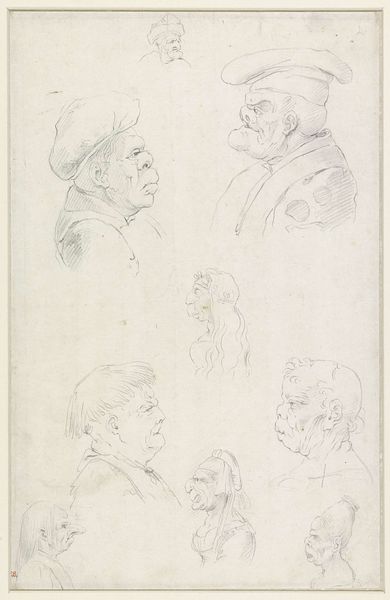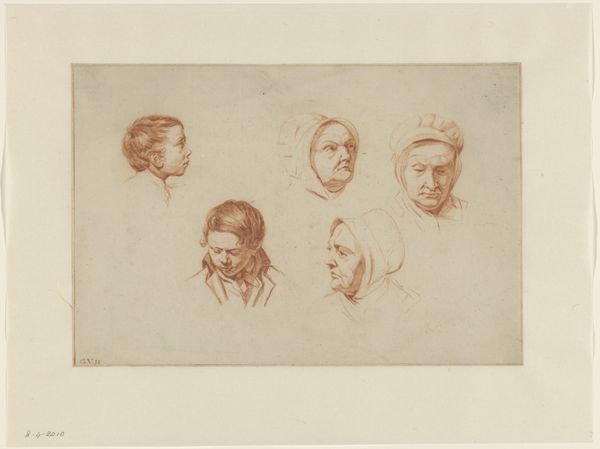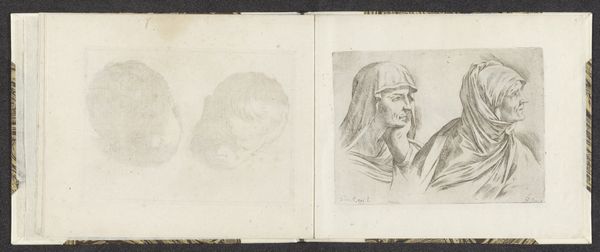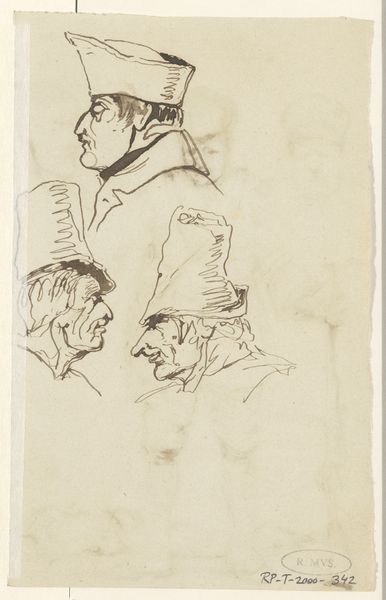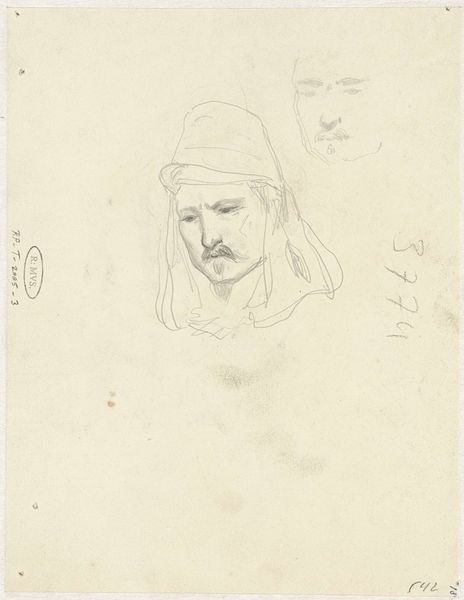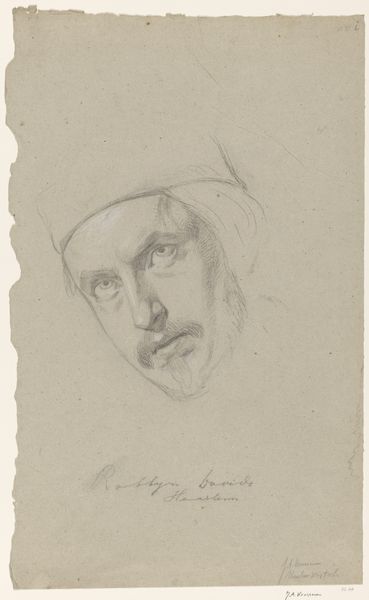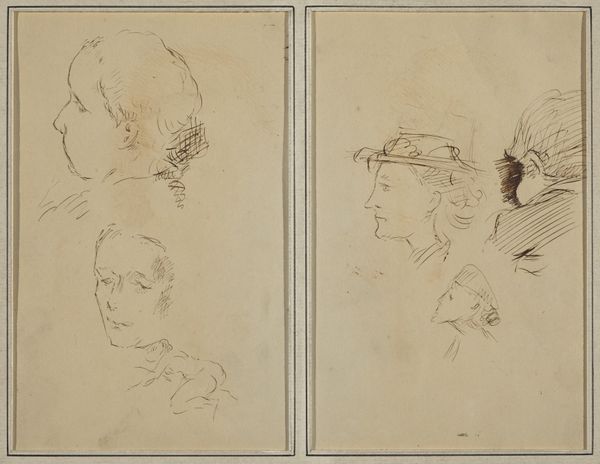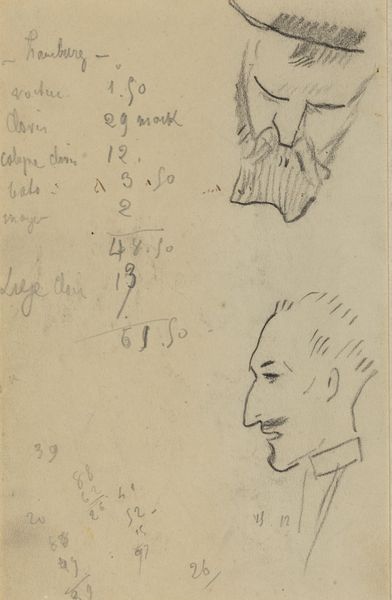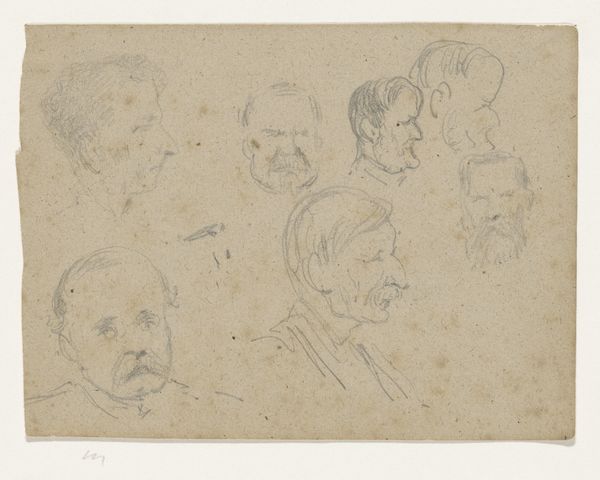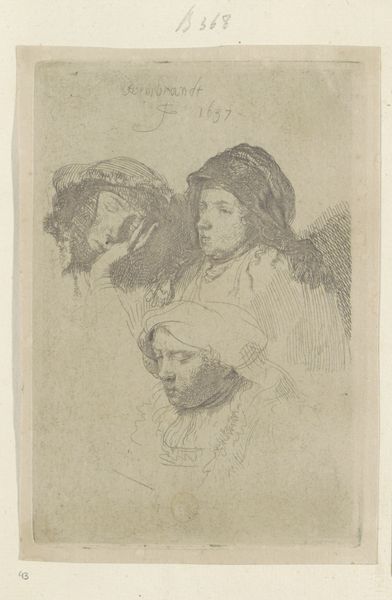
Studieblad met een portret van Caravaggio en bustes van Dante en Brutus 1884
0:00
0:00
drawing, pencil, graphite
#
portrait
#
drawing
#
pencil sketch
#
pencil
#
graphite
#
academic-art
Dimensions: height 338 mm, width 250 mm
Copyright: Rijks Museum: Open Domain
Curator: This drawing, executed around 1884 by Nicolaas van der Waay, is titled "Studieblad met een portret van Caravaggio en bustes van Dante en Brutus." It’s a graphite study featuring those three rather imposing figures. Editor: Imposing is the right word. They loom out of the paper, particularly Caravaggio and Dante at the top. The whole sheet has the aura of concentrated intensity, that academic determination to grasp the great masters. You can almost feel Van der Waay's hand at work. Curator: Yes, you get a palpable sense of artistic striving. The graphite feels almost restless, doesn’t it? Note the lines sketching Caravaggio's features - the delicate curls of his hair, the intense gaze - and the way those strong tonal variations convey such character. It makes me wonder, what did van der Waay see in Caravaggio? Editor: Probably a model of intense expressiveness. It's intriguing that he chose these particular figures. The material and the technique suggest a focus on accessible reproduction, yet also signal a commitment to artistic training—a bridge perhaps between traditional skills and mass-produced art. The labor involved feels both deliberate and repetitive. Curator: The repetition of faces...almost obsessive? All these guys—Caravaggio, Dante, Brutus—had such dramatic, turbulent lives, mirrored, I feel, in Van der Waay's urgent lines. There is Brutus down there in profile... the conspirator. They all seem linked by defiance. Editor: And what’s fascinating is how van der Waay would have experienced those stories—not as lived experience but as material, mediated through textbooks, reproductions. It raises questions about accessibility—were these images intended as mere exercises or for wider dissemination? The format indicates to me studies in human character, a study of drawing and, by proxy, print production techniques in academic context. Curator: Interesting! To me the almost manic energy, and the way he focuses on the drama inherent in these historical figures, transforms this 'study sheet' into something far more passionate. It’s a testament, perhaps, to the artist finding a flicker of his own voice amidst the echoes of giants. Editor: Yes, a quiet defiance bubbling within the strictures of academic study—a hint of rebellion sketched in graphite on a humble sheet of paper. Perhaps his statement on academic constraint as seen through material analysis.
Comments
No comments
Be the first to comment and join the conversation on the ultimate creative platform.
